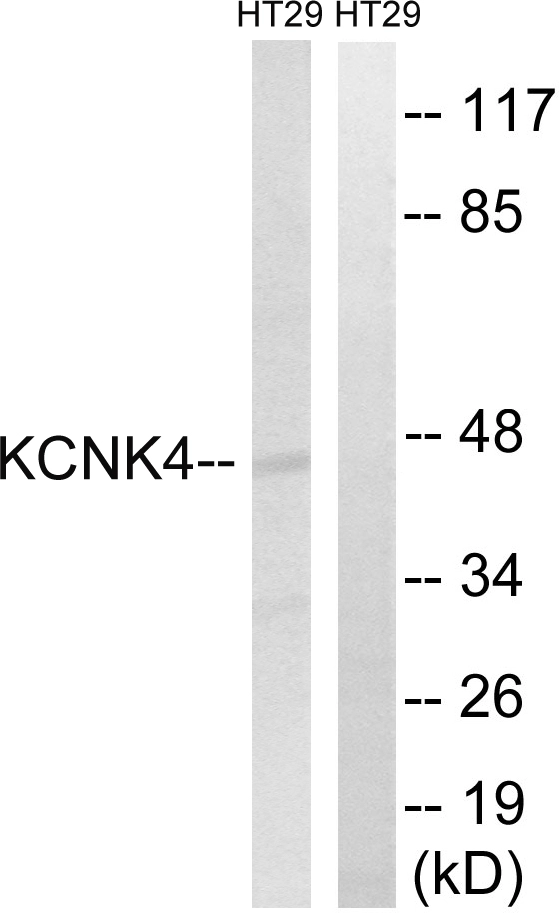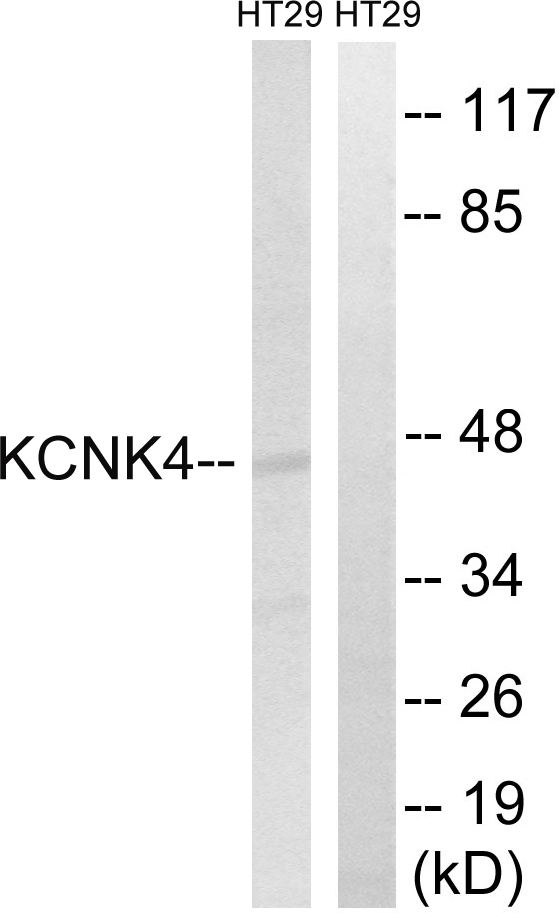
WB analysis of HT-29 cell lysates using GTX87726 KCNK4 antibody. The lane on the right is blocked with the synthesized peptide.
KCNK4 antibody
GTX87726
ApplicationsWestern Blot
Product group Antibodies
TargetKCNK4
Overview
- SupplierGeneTex
- Product NameKCNK4 antibody
- Delivery Days Customer9
- Application Supplier NoteWB: 1:500~1:1000. *Optimal dilutions/concentrations should be determined by the researcher.Not tested in other applications.
- ApplicationsWestern Blot
- CertificationResearch Use Only
- ClonalityPolyclonal
- ConjugateUnconjugated
- Gene ID50801
- Target nameKCNK4
- Target descriptionpotassium two pore domain channel subfamily K member 4
- Target synonymsFHEIG, K2p4.1, TRAAK, TRAAK1, potassium channel subfamily K member 4, K2P4.1 potassium channel, TWIK-related arachidonic acid-stimulated potassium channel protein, potassium channel, subfamily K, member 4, potassium channel, two pore domain subfamily K, member 4, two pore K(+) channel KT4.1, two pore K+ channel KT4.1, two pore potassium channel KT4.1
- HostRabbit
- IsotypeIgG
- Protein IDQ9NYG8
- Protein NamePotassium channel subfamily K member 4
- Scientific DescriptionPotassium channels play a role in many cellular processes including maintenance of the action potential, muscle contraction, hormone secretion, osmotic regulation, and ion flow. This gene encodes one of the members of the superfamily of potassium channel proteins containing two pore-forming P domains. The encoded protein homodimerizes and functions as an outwardly rectifying channel. It is expressed primarily in neural tissues and is stimulated by membrane stretch and polyunsaturated fatty acids. [provided by RefSeq, Jul 2008]
- Storage Instruction-20°C or -80°C,2°C to 8°C
- UNSPSC12352203





